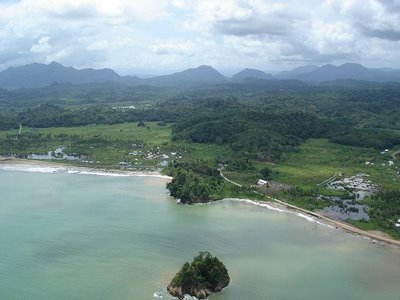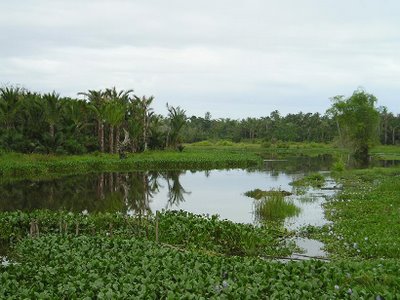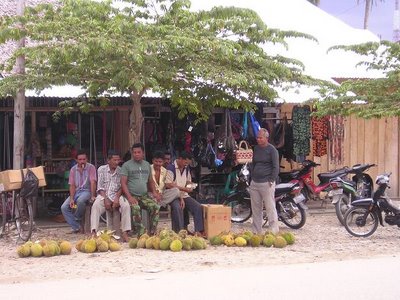June 28th - Real work has begun!
Well... my orientation phase is clearly over: I have had an incredibly busy week! This is not to say that I have not had much to do during my orientation, on the contrary, but this was something else altogether. Real work has begun and I have to say that I am happy about that!
On Monday I spoke pretty much the whole day with our CDR advisor who left to the field again the next morning. We discussed many things and developed a tentative programme for me. The programme still requires fine-tuning and needs to be approved but we have worked out the general idea of what I will be doing the remaining five months in Aceh. What exactly I will do when and where is not yet clear but will become so in the course of next week. Monitoring and evaluating the implementation of the community proposals, reporting, PR and information dissemination and training have all been split into a number of tasks as a part of my package! So, plenty of things to do! I will not be bored, that much is certain!
I started with a number of activities this week already. To begin with, I helped two of my colleagues develop a number of maps showing the IRC’s target communities. The maps are to include general demographic information and to provide an overview of the community projects. We went to the Spatial Information and Mapping Centre (SIM) – set up by the Office of the United Nations Recovery Coordinator for Aceh and Nias (UNORC) and Aceh and Nias Rehabilitation and Reconstruction Board (BRR) – to collect a number of maps that we could use as starting points. The SIM offered right away to customise a number of maps for us; an offer too good to refuse. Given, however, that the SIM does not keep data on the sub-village level we will first need to gather some GPS coordinates. And this might take some time to realise since each field office is operating in sub-villages. We are currently still in the process of updating the information for our own maps as well.
Next, I have spoken with people from different departments to find out how exactly they are linked to the CDR programme and to identify additional possibilities for cooperation. I have spoken mainly with the health department but also a little with the Protection and Child Youth Protection and Development (CYPD) departments. By way of an elaborate participatory process, the CDR teams have succeeded in gaining the trust of the target communities and have facilitated the formation of Community Development Boards (CDBs). Now,  the CDR programme, through the CDBs, forms an ideal entry point for other departments. Because this too presents options too good not to utilise, I plan to have a number of brainstorming sessions with a number of colleagues over the next weeks to work out a strategy and action plan.
the CDR programme, through the CDBs, forms an ideal entry point for other departments. Because this too presents options too good not to utilise, I plan to have a number of brainstorming sessions with a number of colleagues over the next weeks to work out a strategy and action plan.
Besides this, I have, among other things, helped revise as report, made an overview of the training needs as mentioned in the approved community proposals and I have assisted the CDR technical specialist in interviewing a number of CDR team leader candidates.
 I have had but little free time this week and much of this was spent reading reports and policy documents… and watching movies! I have a book and some CDs at home to learn Bahasa Indonesia but have not really made use of them yet. At least I am glad that I do not need to spend any time cooking! I could, if I really wanted to, but why should I? For one or two euro I have a complete meal, and delicious too. Last night, I went to A&W, an American fast-food restaurant for the first time, just to have something other than rice or noodles for a change. A&W is best known for its root beer but ironically it was the one thing they had run out of !
I have had but little free time this week and much of this was spent reading reports and policy documents… and watching movies! I have a book and some CDs at home to learn Bahasa Indonesia but have not really made use of them yet. At least I am glad that I do not need to spend any time cooking! I could, if I really wanted to, but why should I? For one or two euro I have a complete meal, and delicious too. Last night, I went to A&W, an American fast-food restaurant for the first time, just to have something other than rice or noodles for a change. A&W is best known for its root beer but ironically it was the one thing they had run out of !
That is it for this week; not the most exiting week, I know, but informative. Because I have not been into the field this I have added a couple of pictures from Banda Aceh here and there. I have also included a picture of the ship that was swept five kilometers land inwards, where it settled in the centre of the city, in the middle of a road (see my log from june 23rd). Below, I have included some pictures that were taken by the CDR technical specialist while flying with the UN helicopter from Meulaboh to Banda Aceh.





































